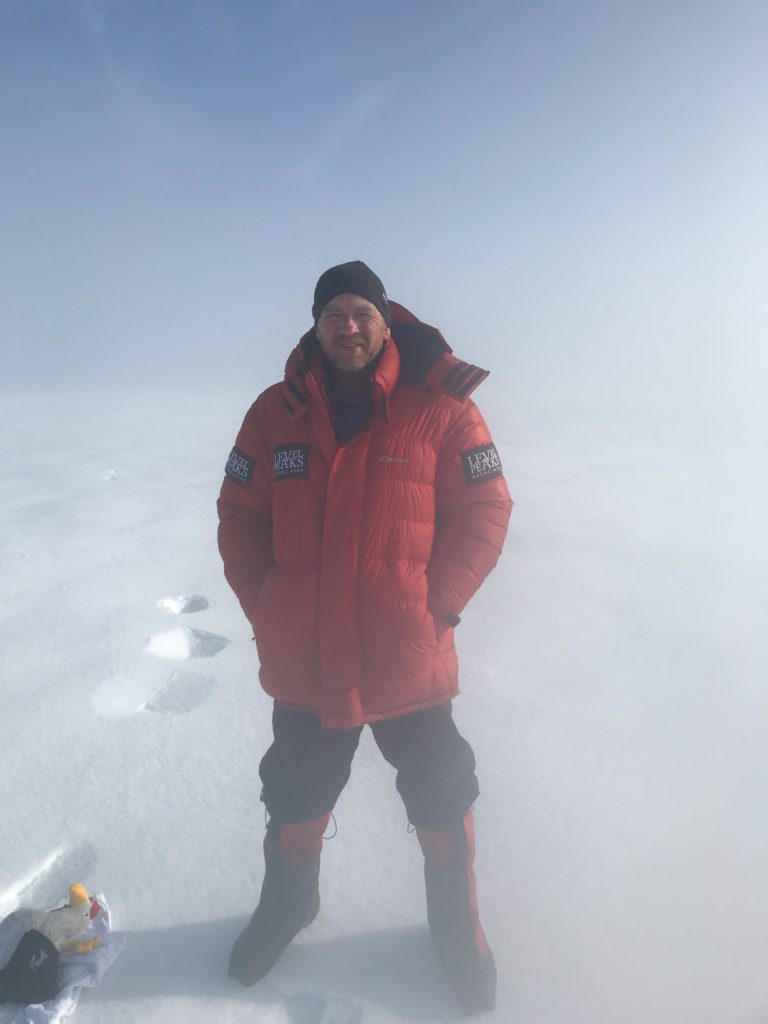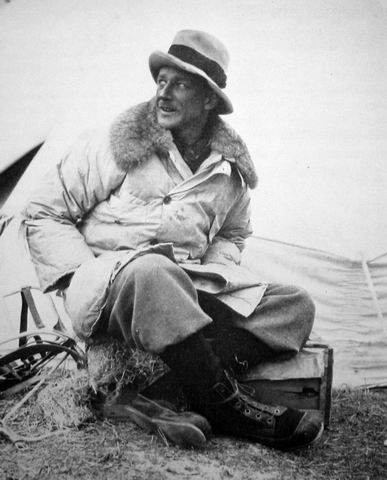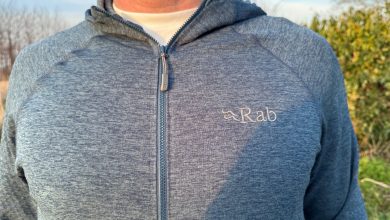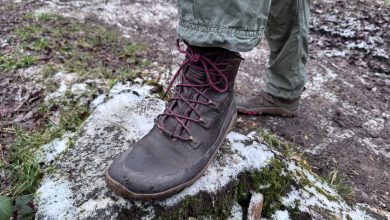What Is A Down Jacket? The Complete Guide

When Jack Frost decides to pay us a visit it’s time to wrap up and beat the chill. For most of us that means ditching t-shirts in favour of something a little warmer – usually a down jacket. But what is a down jacket? And how do they keep you warm?
Down-filled clothing has moved from the kind of specialist gear sported by only huge-bearded explorers and mountaineers to everyday wear. This trend has been driven by outdoor gear companies who have taken popular models and redesigned them for less extreme climates.
Let’s go on a guided tour of the ins and outs of down jackets…
Down Jackets: A Potted History

The phrase down jacket is interchangeable with that of puffer jacket (in my world, at least. My teenage daughter frowns when I use the term which is her way of saying, “You’re so old!”).
Credit for the invention of the down-filled clothing is heaped upon George Finch, a chemist from Australia. He designed an “eiderdown jacket” to equip the team 1922 Mount Everest ascent team. Feathers from the eider duck were packed into bright green jackets made from the same material used in the construction of hot-air balloons.
Much ridicule was directed at those prototypes, but the jackets soon gained much respect from the teams that used them. At this point, it’s fair to say that any garment that helps prevent death due to extreme cold is going to gain a huge amount of admiration.
Puffer jacket is a more recent addition to the high-street hikers’ dictionary and was made popular by media who trailed Princess Diana on her regular skiing trips in the 1980s.
Here’s a more detailed history of down jackets.
What Makes A Down Jacket Warm?
At the heart of every down jacket is a substantial packing of feathers. But no ordinary feathers are used in the construction. The outer feathers do provide a semi-weatherproof shell, but keeping the chill at bay is done by a soft layer of insulating feathers.
Known as down, this thermal insulator is harvested from ducks and geese. Way back before we had any kind of animal welfare, birds were slaughtered purely to supply the outdoor equipment industry. Fortunately, times have changed and the linings used in jackets and other clothing come from animals in our food chain.
Warmth ratings for down clothing is called “fill power” (here’s a deeper dive into what makes a down jacket warm?)
How To Wash A Down Jacket
You need to care for your down jacket so that’s ready for action whenever you feel the call of the wild. But keeping the filling and shell in tip-top condition is more complex than washing your favourite jeans and t-shirt.
There are several considerations you need to bear in mind, including:
- Pre-wash treatment
- Which is the right cleaning material for down?
- Drying time
For more information check out our down jacket cleaning guide.
Understanding Temperature Ratings
Buying a down jacket is easy, right? You choose the style and colour that appeals most to you, hand over your cash and head out on a hike in sub-zero temperatures. That would be the worst mistake you could make.
Choosing a down jacket is a complex task and one not made easy by the sheer number of options available to hikers.
Many questions pop up: is the down fill hydrophobic? How many pockets does the jacket have? Should I buy one with a hood?
But for most hikers and explorers, the biggest concern is the temperature rating system. Should be easy to answer, right? Wrong!
Some manufacturers have ditched the simple approach of specifying a temperature range for their down jackets are suitable for. Instead, they’ve created a system specific to their own products.
I’ve taken the systems of the big five outdoor gear companies and broken them down into an easy-to-understand system. Check out the guide here: down jacket temperature rating demystified.
Are Down Jackets Waterproof?
No! And yes!
Confused? It’s fine, you’re allowed to be.
Back when I was a boy, the process of finding a waterproof down jacket was easy: there wasn’t one. Down was not waterproof, which I discovered on my very first hike across Dartmoor National Park . I was an Air Cadet (for anyone outside of the UK, this is a little like military service for kids… without the carnage that comes with weapons and war). Cold winds rolled in from the north and my team of 4 paused for a break.
As per out agreed routine, we pulled on our down jackets during the halt and soon the chill was forgotten. But Mother Nature had another trick up her sleeve: driving rain.
Lashed by an icy cold downpour that appeared out of nowhere, a couple of us were soon soaked through. On that day we discovered that those early models of, our jackets acted like huge sponges. Fortune smiled on us that day – nobody experienced the horror this is hypothermia!
Times have changed, and technology has improved to the point that all gear can be made waterproof. If you have an older jacket that’s in need of weatherproofing, and you don’t want to buy a replacement, then check out this waterproofing guide for down jackets.
Are down jackets warm?
It’s safe to assume that most down jackets are warm, right? Well, this is always the case, especially when you consider the places you’re going to be hiking. For example, a lightweight down jacket worn on a mild day in Siberia will probably keep you warm. But when the temperatures drop to -20C, and lower, you’re going to get cold fast.
A number of factors determine how warm your jacket will keep you. The most obvious is the fill power (see the above section and links on temperature ratings). More high-quality down will keep you warmer for longer.
Layering your clothing will make a huge difference to the amount of heat retained close to your body. Using what is known as the ‘onion shell’ system can reduce the need for a heavy down mid-layer (but I recommend you take a suitable jacket if you’re heading to extremely cold places).
Some jackets have a windproof shell that keeps the wind out and the heat in. Although useful, densely packed down clothing doesn’t require a windproof shell. Air moving through the shell layer ‘inflates’, or fluffs up, the feathers and this is how heat is retained.
Which is the Best Down Jacket?
Not an easy question to answer as we all have different needs. The easiest way to work out which down jacket is best used for is to create a list of requirements. Below are the considerations I took when on the hunt for a jacket for my trip to the North Pole:
- I rarely feel the cold, except on my hands so the jacket will need to keep my wrists insulated.
- Storms are rare at the North Pole so a windproof shell wasn’t needed.
- The jacket must have a down-filled hood.
- Fill power had to be over 700 (some days the temperature could drop below -30 C)
- Lightest weight possible
- Rain does not fall on the polar ice, so the jacket didn’t need to be waterproof
Those were my main selection criteria, but there is one more to consider: resale value. If you’re planning a one-off expedition, it’s worth thinking about how much value your down jacket will hold as a second-hand item. Good quality gear at less than new prices is a growth industry.
Wrapping Up Your Down Jacket Questions
What is a down jacket? Putting aside all the points above, it’s simply a down-filled piece of clothing designed to keep you warm on those cold days. Many brands and models exist which makes selecting a jacket far from easy. The simplest advice I can give is to find a down jacket that is rated for the places you’ll wear it and make sure the physical fit is good for you.





One Comment